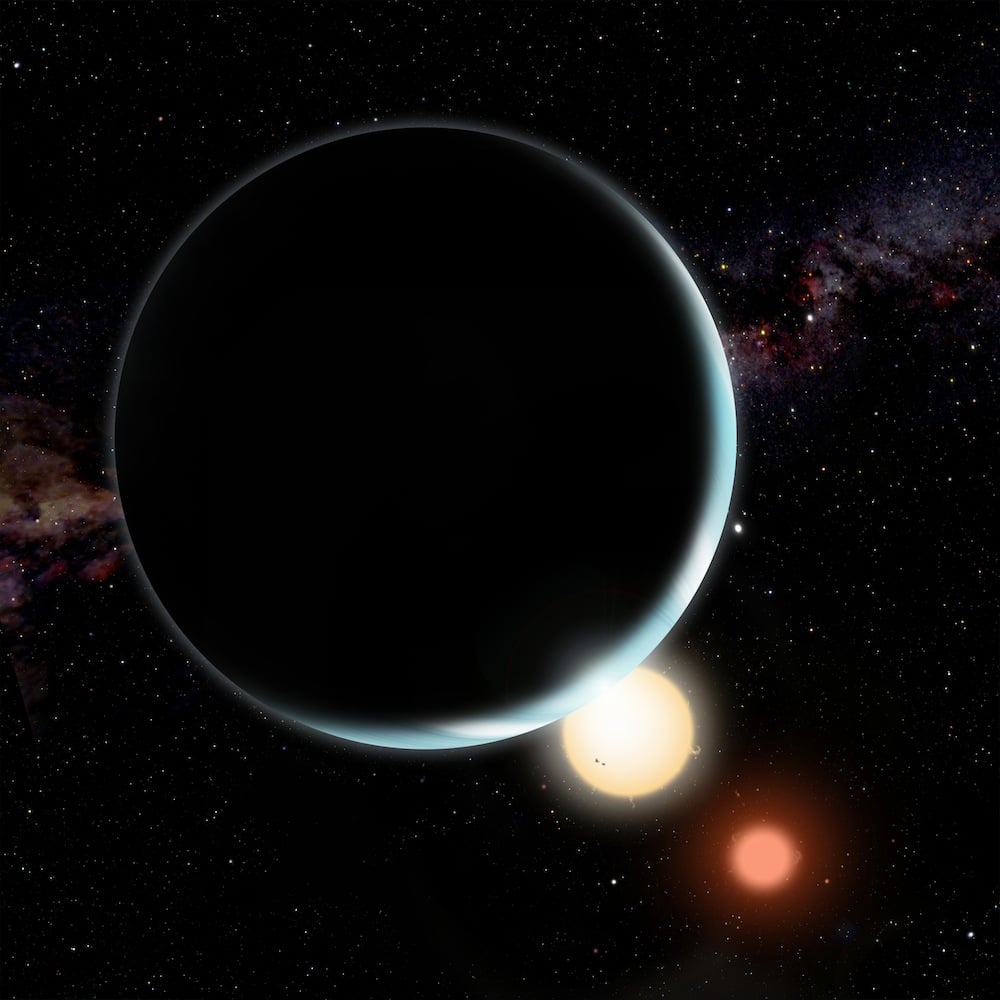To your left is an artist’s rendering of the newly-discovered planet, Kepler-16b. And if you’re wondering if those are two moons, you are mistaken — they are two stars, similar to two suns. Described as a “Saturn-like world,” Kepler-16b is the first planet ever discovered to orbit two “suns.” And that has a lot of people comparing it “jokingly” to a certain planet in a certain well-known science fiction saga … Indeed, this might be the closest version of Tatooine (or Gallifrey) that we’ll ever see in real life.
There are very few such situations in the entire universe that are even close to Kepler-16b’s, but even they have exceptions keeping them from being as special. The star Gamma Cephai is one in a binary system — two stars that are so close they both orbit around one gravitational mass — that has a planet orbiting around it, but that planet is only orbiting around the single star. Most binary systems have two stars with an orbiting planet, but one of those stars is a dead star or a neutron star. But Kepler-16b is the first planet seen to be orbiting around two full-fledged stars, albeit small ones.
Binary systems are found when the stars are observed eclipsing each other, blocking each other’s light and causing a decrease in the amount of light being emitted from the system. But Kepler-16b was found when there was an additional dip in the amount of light, something causing another eclipse:
After observing the pair for some time, a third dip in the system’s light was seen happening at odd intervals. It was clearly due to a planet, but if this object orbited one star or the other, the transits would happen at regular intervals. The staggered time between dips, though, indicated it was actually in a wide orbit around both stars: as it orbits, it blocks one star’s light, then the other’s, and the timing between those mini-eclipses changes as the two stars orbit each other.
And that’s how we discovered Tatooine! Well, not really. However, the same observations helped astronomers determine Kepler-16b’s size — 100,000 km (60,000 miles), roughly the size of Saturn. But even though both of the stars are only about 100 million kilometers (65 million miles) from the planet — about the same distance between Venus and our Sun — both stars don’t give off enough heat to make kepler-16b warm. So there are probably not any humanoid aliens like Luke Skywalker gazing into a double sunset from Kepler-16b.
But we can probably imagine the Doctor swinging by for the view in the TARDIS, can’t we?
(via Bad Astronomy)







